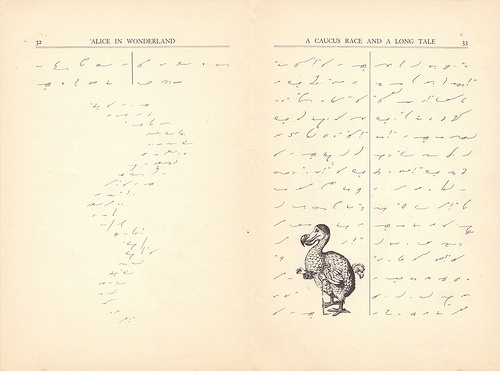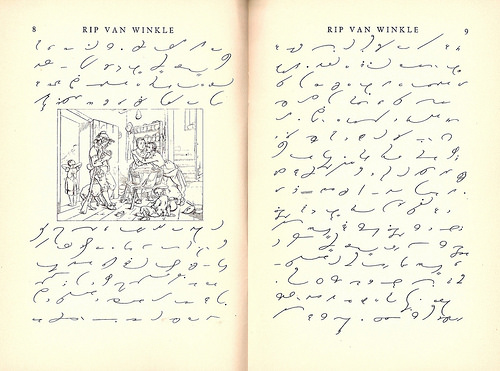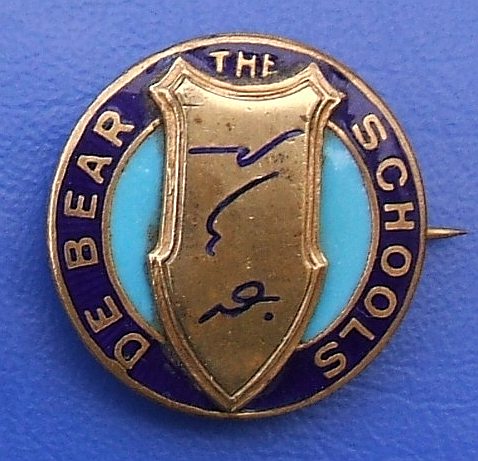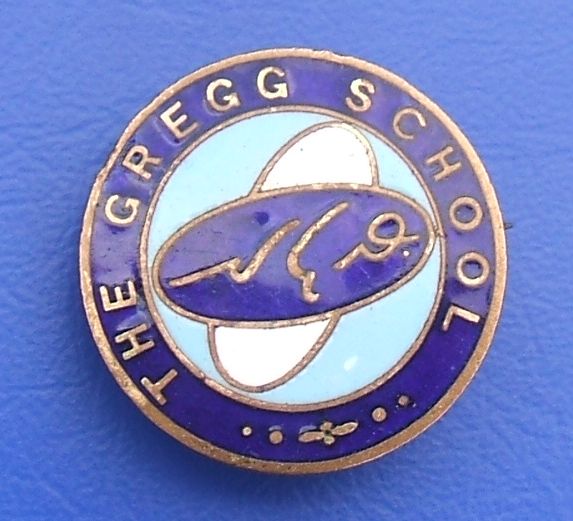As noted in my previous article, I’m covering the site of Zodiac Court and Zodiac House in a mini-series of three articles. The first of these took the story as far as the breakup of the Broad Green estate in the 1890s; here I discuss events at Broad Green House until its demolition in the 1960s; and in the next article I’ll describe the construction of Zodiac Court and events up to the present day.
1890s: Break-up of the Broad Green estate
The Broad Green estate, which dated back to the early 19th century, consisted of an extensive house surrounded by even more extensive grounds. At its peak, it stretched from the modern-day Chatfield Road up to Sumner Road, bounded on the east and west by London Road and Handcroft Road, respectively. Its final occupants were Charles and Mary Chatfield, who moved in during 1856. Charles died in 1876, and Mary in 1891.
Up to this point, the estate had survived largely intact. A portion at the north end had been carved off for housing development in the 1840s, but otherwise the grounds remained unaffected by the increasing development which took place along London Road during the nineteenth century. Mary’s death, however, proved to be a turning point.
In December 1891, Broad Green House and its grounds were offered at auction as a single lot, but failed to sell. However, the next morning they were bought in a private transaction by John Pelton, a grocer with premises on the High Street. Later the same day, John accepted an offer from Sydney Edridge for £500 cash in return for transferring his contract with the seller to Sydney and his investment partners, Walter Hooker and William Fenn.[1]
Sydney and his partners proceeded to develop the estate over the next few years. By the end of 1892, side roads — Chatfield Road and Cavendish Road — had been constructed through the grounds, and work had begun to build houses along them. Broad Green House itself was split into two, with the southernmost portion keeping the name Broad Green House and the northernmost portion taking the name Chatfield House.[2]
1890s–1960s: Abbotsbury
Most of the newly-constructed houses had addresses on Chatfield Road or Cavendish Road, but one took a London Road address, which necessitates a brief diversion here to describe its occupants over the years. This house, known as Abbotsbury, was built just a short distance up the north side of Chatfield Road (actually slightly closer to London Road than the frontage of Broad Green House itself).
Its first occupant was Ellis B Staples, an umbrella manufacturer with premises at 123 North End. Ellis seems to have been the one to give Abbotsbury its name; he had previously lived at another house of the same name, located at 35 Oakfield Road. He and his wife Annie arrived here by 1894 and remained until around 1898, before moving to Bushey in Hertfordshire.[3]
Next to arrive at Abbotsbury was William Gristock, a doctor of medicine who had previously lived on Finchley Road in North-West London. He was in place by 1899, accompanied by his widowed mother Nancy and another woman, Ann Jane, who was either his wife or his widowed sister-in-law. He does seem to have practiced here briefly, as well as using it as his residence, but he was in poor health and died at home on 23 April 1901, aged just 47. Nancy and/or Ann Jane remained at Abbotsbury for a while after William’s death, but were gone by the end of 1902.[4]
By 1903, Abbotsbury was occupied by Ernest Dowden, his wife Edith, and their young son Leonard. Ernest appears to have been quite well-off; the 1911 census lists him as a “Retired Clerk” at the age of only 42. The family remained here until around 1924, when they moved to 44 Warham Road, South Croydon (which they named Abbotsbury too).[5]
The final residents of Abbotsbury, in place by 1925, were John Arnold Smith (who seems to have gone by “Arnold” rather than “John”) and his wife Dorothy Marie. Dorothy had grown up just a hundred metres away, at 185 London Road, where she lived with her parents Victor and Rose Vervaeke. Rose in fact seems to have moved into Abbotsbury with Dorothy and Arnold at some point after Victor’s death.
The mid-1950s must have been a difficult time for Dorothy. Her husband died at Bognor Regis in August 1954 and her mother died at Abbotsbury less than a year later, leaving her doubly bereaved. She continued to live at Abbotsbury until the early 1960s, when it was sold for development along with Broad Green House. Now in her early 70s, she chose to remain in the local area, moving to 30 Oakfield Road where she died on 31 October 1978.[6]
1890s: Sale of Broad Green House
We now return to Broad Green House itself. Sydney Edridge seems to have had some trouble finding a buyer for this “grand old house”, as he explained in the Croydon Times four decades later:[7]
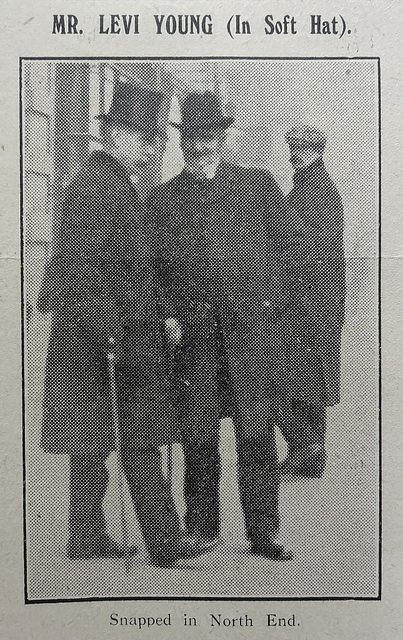
We were unable to obtain a purchaser at the price we stood out for, the only tangible negotiator being Levi Young, and we could not bring him up to the scratch. We decided to pull it down, sell the material, and build on the frontage. We published a day of sale and a catalogue. Levi Young was only just in time; a contract was entered into, and Chatfield House became his property.
Sydney’s use here of the name “Chatfield House” rather than “Broad Green House” shows how closely the estate had come to be associated with Charles and Mary Chatfield; indeed, elsewhere in the article he refers to “Chatfield’s Estate” and “the Chatfield Estate”.
When Levi Young split his new purchase into two properties, as described above, it must have been an easy decision to call the northern half “Chatfield House” while retaining the name “Broad Green House” for the southern half.[8]
Levi sold Chatfield House fairly swiftly, to John Pelton, who as noted above had originally been set to buy the entire estate. In a future article, I’ll discuss John at greater length and also cover further events at Chatfield House; from here on, I focus solely on the half of the house which retained the name of Broad Green House.
1890s: Maria and Charles Ormerod
Levi did not move into Broad Green House immediately. By late 1892, he had rented it to Maria Ormerod, who was the widow of “the late Rev. C. H. A. Ormerod, of Croydon”. She brought her son Charles, a doctor, along with her, but a couple of years later, Charles married Rosalind Mary Jaques, and by the end of 1895 all of the Ormerods had left. The 1901 census shows Maria living in Somerset and Charles and Rosalind in Hampshire.[9]
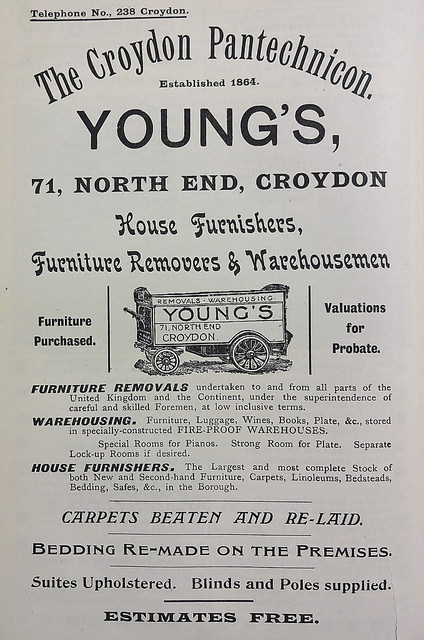
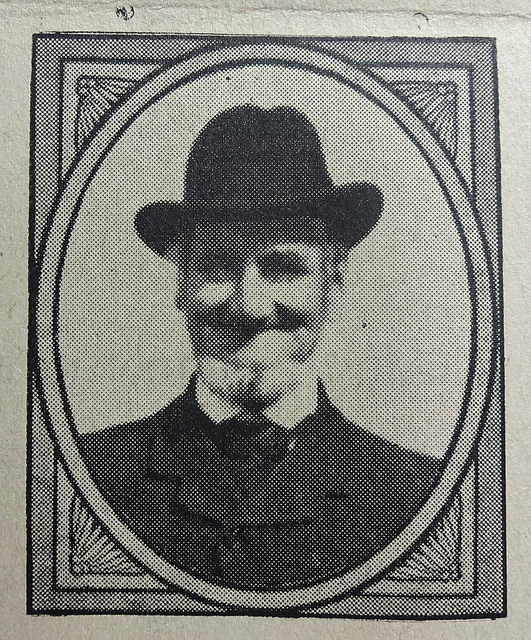
1890s–1920s: Levi Young
Following the departure of the Ormerods, Levi was now finally ready to move into Broad Green House. He would spend over three decades here, the first of them in the company of his wife Elizabeth.
Born in Brighton in the 1830s, by 1861 Levi was married, living in Croydon, and working as a porter. He also, at some point around this time, worked as a cooper for George Price, a wine merchant in the High Street.[10]
His cooperage skills must have come in handy when, in 1864, he founded what was to become a very long-lasting furnishing business. This was initially at 53 Church Street, but by 1878 the business had expanded so much that he moved to new premises at 30 North End.[11]
Levi had “an intimate knowledge” of the history of Croydon, and “was a most interesting talker when upon this theme”. On at least one occasion he also took physical action to preserve this history; on the night of the great fire at Croydon Parish Church, he and a Mr Jarrett “dashed into the church and carried out a lectern” which was later replaced in the rebuilt church.[12]
He was well known as a local businessman:[13]
There was rarely a sale held in Croydon or its environs at which Mr. Young was not a familiar figure, and his uncanny instinct for a bargain soon became a by-word among his business associates.
“He would buy anything from a chair to an elephant,” said a friend of Mr. Young to a “Croydon Times” representative, “and yet, in all his purchases, I have never known him make a mistake.”
[...] Even while on holiday, his passion for attending sales did not desert him. Some of his best bargains were secured whilst he was on holiday.
He seems also to have enagaged in horse-trading; a report on a November 1891 sale of horses at the Royal Repository, Barbican, records him as having “sent up six heavy horses and a very good-looking ‘brown nag mare,’ the lot changing hands at about 28 guineas each” (£3428 each in 2017 prices).[14]
Levi and Elizabeth moved into Broad Green House around 1895. Elizabeth died in November 1907, but Levi continued to live here until his own death on 7 April 1928 at the age of 93.[15]
1920s–1950s: The Gregg School
Levi was the last person to use Broad Green House as a private residence. Although retaining the freehold, his trustees leased the building to the Gregg Schools Ltd, an organisation which provided vocational training for pupils intending to enter the commercial world as secretaries, clerks, and so on.[17]
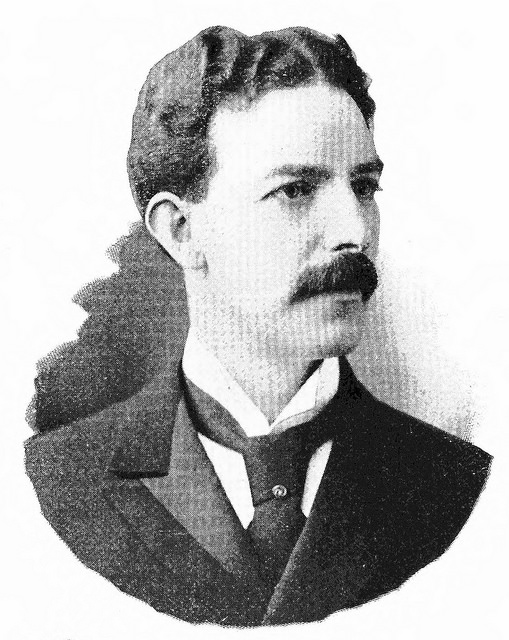
The Gregg Schools originated in the work of John Robert Gregg, inventor of a form of shorthand which eventually became a rival to the previously-predominant Pitman system. Born in Ireland in 1867, John was considered “slow” by his family due to an early ear injury that rendered him hard of hearing, and hence was exempted from his father’s insistence that the children of the family should learn Pitman shorthand.
John, however, had his own opinion on the matter. He decided to teach himself shorthand, but having seen how his siblings struggled with the overly-complex Pitman system, he instead chose to learn from a 20-page textbook called Odell’s Shorthand, which described a shorthand system first published by Samuel Taylor in 1786. His success in this project spurred him on to learn more about shorthand.
After John’s family moved to Glasgow in 1878 he used textbooks at the Mitchell Library to teach himself the Pitman system, though it did indeed turn out to not be entirely to his taste. He went on to learn Duployan shorthand, which originated in France and had been adapted into English by three different phonographers in three different ways — John learned all three — as well as English adaptations of the German Gabelsberger and Stolze systems.
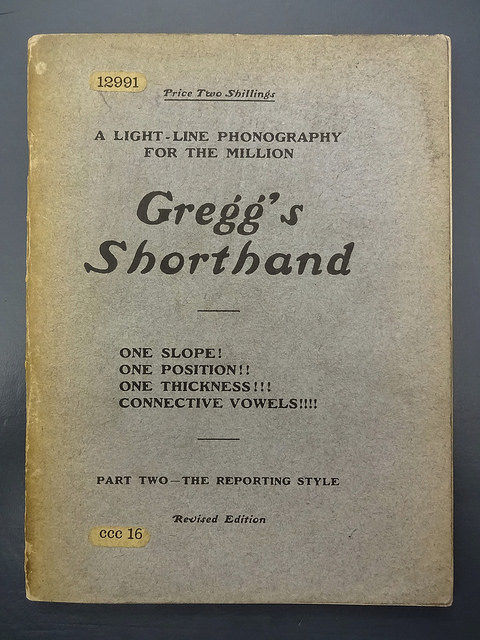
John was now ideally placed to invent his own shorthand system, being familiar with the advantages and disadvantages of a wide variety of existing systems. His first attempt at publishing such a system, in collaboration with an agent for the Sloan-Duployan system known as Thomas Stratford Malone, was sabotaged by Thomas’ lack of experience and refusal to defer to John’s greater knowledge; the resulting Script system fell a long way short of John’s ideals.
Further disputes followed, with Thomas doing his best to avoid giving John any credit for Script while making sure that John continued to work for its success. Eventually, however, John had had enough. He severed all association with Thomas, and published his own system, which he had continued to develop over the years, as two 28-page booklets under the name Light-Line Phonetic Handwriting. By the time he emigrated to the USA in 1893, the system had been renamed to Gregg’s Shorthand, a name later simplified to Gregg Shorthand.[18]
Gregg Shorthand was “a radical departure from the old lines of shorthand construction”, being intended “to adhere to those natural principles that govern ordinary writing”. Its increasing popularity in both the United States and the United Kingdom was supported by the establishment of the Gregg Publishing Company, which published not only manuals and dictionaries but also novels printed in shorthand, including Arthur Conan Doyle’s The Sign of The Four, Lewis Carroll’s Alice in Wonderland, and Washington Irving’s Rip Van Winkle.[19]
By the early 1920s there were “two great chains of business schools in Great Britain” — the De Bear Schools, which had “some thirty schools in London” plus more in “the leading cities of England, Scotland, Wales and Ireland”, and Clark’s Colleges, which consisted of “some twenty-two schools located in and around London”. On 25 April 1922, John Gregg sailed to England in order to help both of these chains switch over to training their students exclusively in Gregg shorthand. This must have been of particular interest to the London Road Clark’s College, which had a rival Pitman’s School further up the road at number 428–430.[20]
The De Bear Schools were, in fact, the origin of the Gregg Schools. This chain of British commercial schools was founded in 1913 by Bernard De Bear, who had previously been principal of Pitman’s Metropolitan School of Shorthand and examiner for the London Chamber of Commerce.
Following Bernard’s death in October 1924, the De Bear Schools were purchased by John Gregg, who not only renamed the chain to the Gregg Schools, but set about opening new branches. The first Gregg School to arrive in the Borough of Croydon was at 1266 London Road by late 1928, and the second opened at Broad Green House in May 1929, just over a year after Levi Young’s death.[22]
In addition to the focus on commercial subjects, the West Croydon Gregg School also accepted younger pupils for a more general education. When the school was inspected by the Education Committee of Croydon Borough in October 1929, headmaster H G Bertaut “was emphatic on the point that for those children between the ages of 8 and 14 the syllabus was general and cultural with no suggestion of vocational stress.”[23]
1934 saw the appointment of Kenneth A Lewis as a teacher “with special responsibilities for the development of the general education side, sports and swimming”. In 1941, Kenneth became headmaster of the school, and in 1953, six years after the death of John Robert Gregg and the subsequent acquisition of The Gregg Schools Ltd by publishing company McGraw-Hill, he also became its owner.[24]
1950s–1960s: Broad Green College
The school underwent significant changes after Kenneth’s appointment as headmaster, and these changes only accelerated after it became independent from the wider Gregg Schools organisation. As early as 1944, it had become apparent that “the chief demand of parents was for a grammar school”, and as Kenneth “put into practice his own personal policy”, the commercial aspects of the school were pruned away. “Shorthand and typewriting [...became] additional to and not a substitute for the General Certificate of Education.” In line with this, in late 1956 the school took on a new name: Broad Green College.[25]
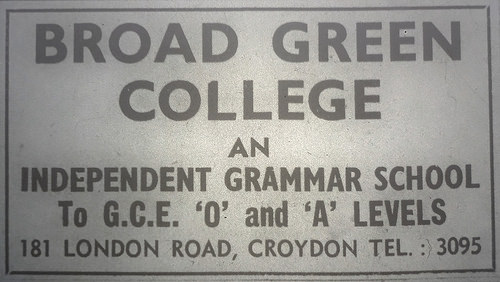
A further step towards grammar school status was taken in September 1957, as all the primary-age pupils were transferred to Rosedean Preparatory School, further up the road at number 677. Broad Green College “now had more space for activities that were proper to a grammar school.”[27]
A science laboratory was opened in July 1958, with the costs met entirely from voluntary fundraising efforts by “the parents’ association, and other friends of the school”,[28] and by early 1961 Broad Green College was proudly advertising itself as “an independent grammar school”.[29]
These changes were not without their downsides. The proportion of girls applying to enter the school decreased after the move away from commercial subjects — “due largely to the fact that there [...was] already an adequate number of girls’ independent schools in the area” — until by 1962 only 30 of the 200 pupils were female. Since this meant that “handicraft subjects and physical education classes” were “awkward to arrange adequately”, the decision was made to switch from mixed to single-sex education. Girls already at the school would “work their way through the school normally”, but no new female pupils would be accepted.[30]
1960s: The departure of Broad Green College
Another significant event in the school’s history took place shortly after, and this was to have much more wide-ranging repercussions. In late 1962, the Land and House Property Corporation Ltd bought one and a half acres of land with a 300-foot frontage on London Road, including Broad Green College. Planning consent for “12 lock-up shops, 36 flats and 25,000 sq. ft. of office space” had already been granted by Croydon Council even before this sale,[31] but Kenneth Lewis assured the Croydon Times that:[32]
“Although the site on which the college stands has been sold, the college will continue undisturbed for at least another 18 months under the terms of the present lease.
“In the meantime, arrangements are well in hand for safeguarding the future of the college and housing it in new premises.
“It is probable that a new building will be erected on part of the present site and discussions have already commenced between myself and the managing director of the development company concerned.
“I can assure you that there is no intention whatever of closing our school or any part of it, either in the near or remote future.[”]
Despite this suggestion that the college might remain on London Road, in July 1964 Broad Green College moved into “purpose-built freehold premises” on Normanton Road, “a pleasant and quiet residential area on the southern fringe of Croydon”.[33] In 1983, it merged with its “feeder” prep school, Graystones, began once again admitting girls, and was renamed to Normanton School.[34] It continued to operate as a co-educational private school until its final closure in the early 1990s.[35]
1964: Demolition
The Land and House Property Corporation lost little time in proceeding with its development plans after the departure of Broad Green College. By mid-November 1964, demolition of Broad Green House was complete, and the foundations had been laid for the buildings which would become known as Zodiac Court and Zodiac House. Their story, right up to the present day, will be told in my next article.
Thanks to: Carole Roberts; Cathy Aitchison, for useful discussion on Broad Green House; James Coupe, for helpful discussion on wills; Peter Brown; Stuart Williams; the Planning Technical Support Team at Croydon Council; the staff, volunteers, and patrons at the Museum of Croydon; and my beta-readers Kat and Steve. Census data consulted via Ancestry.co.uk. Monetary conversions performed using the Bank of England inflation calculator (prices < £100 given to the nearest penny, prices from £100 to < £100,000 to the nearest pound, prices from £100,000 to < £1 million to the nearest £1,000, prices from £1 million to < £100 million to the nearest £100,000, prices ≥ £100 million to the nearest million).
Footnotes and references
Most of the information in this paragraph is taken from an article by Sydney Edridge on the front page of the 11 July 1931 Croydon Times (“I Entertain the ‘Divine Sarah’”) and from page 44 of Urban Development and Redevelopment in Croydon 1835–1940, Ron Cox, PhD thesis, Leicester, 1970. According to the latter source, John paid £9000 for the estate (£1m in 2016 prices; his profit of £500 is similarly equivalent to £58,298), and was “almost certainly acting on behalf of the Croydon Land and Investment Co.” Sydney’s article states that the property was “bought in”, which according to Sotheby’s glossary of auction terms means that “the lot [...] is left unsold and remains the property of the owner” and is usually the result of there being no bids, or bidding not reaching the reserve price. Sydney says that he “went to Old John Pelton in his small shop in the old High-street” to negotiate over the property; Wards 1892 directory lists Pelton Bros, Grocers, at 40, 42, and 44 High Street. It’s worth noting that shortly after all this, John Pelton moved into the part of Broad Green House that had been renamed to Chatfield House, and so I’ll discuss him further in a later article.
The wording of Sydney’s article is somewhat ambiguous when it comes to his investment partners, due to slightly scrambled punctuation: “Walter Hooker Fenn, and I acted together in those days in the estate market.” However, another article in the same series includes memories of “the time when Walter Hooker, W. G. Fenn, and myself sported in the quicksands of land speculation. [...] Hooker, Fenn, and self held an emergency meeting in Fenn’s dental rooms in George-street” (“Story of the Grand Theatre”, Croydon Times, 26 September 1931, front page), so it seems clear that there should be a comma between “Hooker” and “Fenn”, and that this refers to two people.
According to Carole Roberts, who has made a special study of the High Street, Walter Hooker was one of the partners at Hooker & Webb, 4 High Street, which Ward’s 1892 directory describes as “Auctioneers, Surveyors, House & Estate Agts. [Agents]”, and W G Fenn was a surgeon-dentist based at 2 George Street. Carole tells me: “I wondered whether he [Walter Hooker] had business links with Sydney George Edridge when I learned that Walter in 1890 named his son Walter Sydney Hooker” (via email, 13 July 2017 and 20 July 2017). W G Fenn himself lived on London Road; the 1891 census shows him at number 344, which was renumbered to 604 in 1927 and later demolished and replaced by Justin Court. (The 1891 census is also the source of his full first name.)
- In the aforementioned “I Entertain the ‘Divine Sarah’”, Sydney states that “We developed the property successfully, and all that was left was the grand old house”. Chatfield Road, Cavendish Road, and Chatfield House are absent from Ward’s 1892 directory but appear from 1893 onwards; the 1893 edition also records a total of 14 “houses building” along Chatfield Road, and one completed house plus 9 “houses building” along Cavendish Road (note that data for these directories was generally finalised late the previous year). The division of Broad Green House into Chatfield House and “Broadgreen [sic] House” can be seen on the 1896 Ordnance Survey map. It may be of interest to compare this estate break-up with that of the Oakfield Estate further down the road, three decades earlier.
- Ward’s directories list Ellis B Staples at Abbotsbury, 35 Oakfield Road, in 1890 and 1891; at Glaslyn, 41 Oakfield Road, in 1892 and 1893; and at Abbotsbury, London Road, from 1894 to 1898 inclusive (they also show that 35 Oakfield Road seems not to have existed pre-1890, and that it was renamed from Abbotsbury to Yeoveney around the same time as Ellis’ move to London Road). Before 1890, he appears only at his business address of 123 North End. His profession and his wife’s name are taken from the 1891 census (at 35 Oakfield Road), and his business address is taken from Ward’s 1894 (note that according to the advert reproduced here, he also previously had premises at 11 High Street, but he last appears there in Ward’s 1892). The 1901 census shows Ellis and his family in Bushey (coincidentally, on another London Road).
Ward’s directories list William Gristock at Abbotsbury in 1899, 1890, and 1891, and Mrs Gristock in 1892 (it’s not clear whether Mrs Gristock was Nancy or Ann Jane). The 1898 Medical Directory lists William Gristock, “M.D. Lond. 1880, M.B. (Honours) 1877; M.R.C.S. Eng. and L.S.A. 1877”, at 6 Finchley Road, NW, while the 1899, 1900, and 1901 editions list him at 101 London Road, West Croydon (this is the number given for Abbotsbury in Ward’s directories from 1900 until it was renumbered to 179 in the 1920s). He is unsurprisingly absent from the 1902 edition aside from a brief announcement of his death in the obituary section. The 1901 census describes his health as “Weak”. His date, place, and age of death are taken from an announcement on the front page of the 27 April 1901 Croydon Guardian (see also his entry in the National Probate Calendar).
Information about Nancy and Ann is taken from the 1901 census. This census lists Nancy as the head of the household, William as her married son, and Ann as her widowed daughter-in-law. (Nancy is likely head of the household due to William’s weakness.) If this information is all accurate, then one wonders where William’s wife is; moreover, I haven’t been able to find any other sons of Nancy in earlier censuses, so it isn’t clear who Ann’s husband was. It seems possible that Ann should be listed as married rather than widowed, and hence is William’s wife.
- Ward’s directories list Ernest Dowden at Abbotsbury, London Road, from 1903 to 1924 inclusive. The 1911 census lists Ernest, Edith, 10-year-old Leonard, and Leonard’s 2-year-old sister Muriel, who given the dates would have been born at Abbotsbury. Ward’s 1925 directory lists Ernest Dowden at Abbotsbury, 44 Warham Road.
Ward’s directories list J Arnold Smith at Abbotsbury from 1925 to 1932 inclusive, and J A Smith in 1934, 1937, and 1939. Kent’s 1955 and 1956 directories list Dorothy M Smith. Arnold’s death details are taken from his entry in the National Probate Calendar, and Rose’s are taken from hers. It’s unclear when Rose moved into Abbotsbury, but her National Probate Calendar entry lists her as living there at the time of her death.
A planning application for shirt manufacture at 147 London Road was granted to Mrs Dorothy Smith of 179 London Road on 20 March 1961 (ref 61/155, viewed on microfiche at Croydon Council offices), showing that she was still living there at that point. Dorothy’s entry in the National Probate Calendar shows her at Melton House, 30 Oakfield Road, and phone books from the May 1964 Kent/Surrey edition onwards also show her (as D M Smith) at this address. Oddly, earlier phone books continue to list J A Smith at 179 London Road up to and including the March 1964 Croydon edition despite Arnold’s death in 1954. This may have been due to Dorothy’s going by the name of Mrs J A Smith and the directory compilers forgetting to include her title, or perhaps she simply didn’t consider it important to inform them of her husband’s death.
For information on demolition of Broad Green House and Abbotsbury, see the next article in this series, and for more information on Rose and Victor Vervaeke, see my article on 185 London Road.
- “I Entertain the ‘Divine Sarah’”.
- I haven’t been able to find out for definite when the sale to Levi Young took place. It’s possible that it actually happened later than I thought, and that it was Sydney Edridge who split the house into two, rented Broad Green House to the Ormerods, and sold Chatfield House to John Pelton. However, given how rapidly Sydney developed the rest of the estate, and his willingness to pull the house down, I think it implausible that he would have waited three years to dispose of the Broad Green House half of the house. It also seems unlikely that he would have failed to mention a sale to John Pelton in his Croydon Times article; moreover, his use of the term “Chatfield House” suggests that he was thinking of the house as a whole rather than split into two.
- Ward’s 1893 directory (the information for which would have been finalised late the previous year) lists Mrs Ormerod and Charles Ormerod at Broad Green House and John Pelton, J.P., at Chatfield House. Quotation about Maria’s husband and information about Charles’ marriage are taken from Charles and Rosalind’s marriage announcement on page 4 of the 24 November 1894 Croydon Chronicle. Ward’s directories list Mrs Ormerod and Charles Ormerod, LRCP MRCS, at 1 Fell Road up to and including 1892, and at Broad Green House in 1893, 1894, and 1895. (Charles is C E Ormerod at Fell Road, Charles Ormerod in 1893, and Charles E Ormerod in 1894 and 1895, but these are clearly all the same person. Maria’s first name is taken from the 1891 census.) Ward’s 1896 directory (the information for which would have been finalised in late 1895) instead lists Levi Young at Broad Green House. I matched Charles and Maria in the 1901 census via their ages and birthplaces in the 1891 census, when they were still living on Fell Road.
- Levi’s obituary on page 7 of the 14 April 1928 Croydon Times states that he moved to Croydon when he was “about eighteen”. Censuses give his age as 26 in 1861, 36 in 1871, 45 in 1881, 54 in 1891, 63 in 1901, and 74 in 1911 (giving a birth year of 1834, 1835, 1836, 1837, or 1838); and his place of birth as Lewes in 1871 and 1891 and Brighton in 1861, 1881, 1901 and 1911. (I’ve gone with Brighton here, since the 1911 census was filled in by the householders themselves, rather than census-takers.) His Croydon Times obituary states that when he “caught a cold” seven weeks before his death, he was 93 years old, suggesting a birth year of 1834 or 1835. The 1861 census gives his profession as “Porter”. Information about his working at George Price’s is taken from his obituary; note that George Price’s business was originally started by the Chatfield family, one of whom (Charles) also lived at Broad Green House before the breakup of the estate.
- Street directories list Levi Young at 53 Church Street from 1865–66 to 1876 inclusive (as a “Cooperage” in Warren’s 1865–66, “furniture van propr. & turnery warehs” in Wilkins’ 1872–3, and “Cooperage” [with a “Furniture Depository” on Waddon Road] in Ward’s 1876). Ward’s directories list him variously as a “Contractor for Removals”, “Fancy Repository”, “Furniture Remover and Storer”, and “Upholsterer and Cabinet Maker” at 30 North End from 1878 to 1885 inclusive and at 71 North End from 1886 to 1895 inclusive. They then list either Young’s or L Young Ltd, still at 71 North End, from 1896 to 1930 inclusive. The 1932 edition lists number 71 as vacant, with L Young Ltd at “Drummond road (in rear)”, and the 1934 edition makes no mention of L Young at all. (A comparison of the listings of other North End businesses in 1885 and 1886 shows that the change from number 30 to number 71 was a renumbering of the road rather than a move.) His Croydon Times obituary states that the reason for the move to North End was that “expansion of his business was such that more commodious premises were soon needed, and so Mr. Young built the North End shop and warehouses in which the business is now housed.”
- Information and quotations taken from Levi’s Croydon Times obituary. The fire at Croydon Parish Church took place on the night of Saturday 5 January 1867. For more information, see John Hickman’s Croydon Advertiser article or Brian Lancaster’s Consumed by Fire: The Destruction of Croydon Parish Church in 1867 and its Rebuild.
- Quotations taken from Levi’s Croydon Times obituary.
- “Sale of horses at Barbican”, Sporting Life, 7 November 1891, page 5. The “8” in “28 guineas” is fairly faint in this source — I may be misreading it, but I think my reading is most likely.
- Ward’s directories list Levi Young at Broad Green House from 1896 to 1928 inclusive. Elizabeth appears as Levi’s wife in the 1861, 1871, 1881, 1891, and 1901 censuses. Her date of death is taken from her death announcement on the front page of the 7 November 1907 Evening Standard, and Levi’s is taken from his entry in the National Probate Calendar.
- The sign was in Peter’s own possession at the time of taking this photo. He tells me he got it from a lady in Thornton Heath, but doesn’t know where she got it from.
- An outline planning application was granted to “The Trustees of Levi Young, Esq., deceased” on 6 July 1962, showing that Levi’s trustees still retained an interest in the land even up to the 1960s (ref 62/740). A report of the County Borough of Croydon’s Education Committee’s inspection of the Gregg School, Broad Green House, on 16 October 1929 (collected in Private and Preparatory Schools 1924–1934, ref CBC/3/1/14 at the Museum of Croydon) states that “In the main [...the school’s] aim is to provide opportunities for vocational training for pupils who wish to take up commercial or business appointments.”
- All information in this and the preceding paragraphs is taken from John Robert Gregg by Leslie Cowan (Pre-Raphaelite Press, Oxford, 1984). According to a chapter note on page 57, the change from “Gregg’s Shorthand” to “Gregg Shorthand” was because John was “irritated by being called ‘Mr Greggs’.”
- Quotations taken from page x of Gregg Shorthand: A Light-Line Phonography for the Million (Anniversary Edition) (available as a PDF on Andrew Owen’s Gregg Shorthand website). John’s inspiration for this adherence to the “natural principles” of “ordinary writing” seems to have been sparked by an article he read in the July 1884 issue of Browne & Holland’s Shorthand News, describing a shorthand system invented by Moroccan physician Thierry Mieg which “adopted the slope of the ordinary writing which will survive as the most beautiful of all”. Half a century later, John stated that “That brief statement made a profound impression on me. Coming upon it soon after reading Thomas Anderson’s books in which the same opinion was expressed, it isn’t perhaps, too much to say that it was the deciding factor in determining the lines on which all my future experiments should be made.” (Both quotations are as quoted by Cowan, page 17.) Examples of shorthand novels are taken from the Internet Archive; The Sign of The Four is here, and the other two are linked from the relevant image caption in the main article.
- Quotations and information on John Gregg’s trip taken from an article on page 16 of the May 1922 Western Journal of Education (“A successful man whose books are a service to schools”).
- According to a commenter on Stuart’s Flickr page, the shorthand says “modern business training”. S J Šarman’s English-to-Gregg translator suggests that it’s more akin to “mod biz train”, but Andrew Owen’s chart of Gregg Shorthand brief forms makes it clear that the second symbol in the phrase is a standard shortening of “business”.
Dates of founding of the De Bear Schools and of Bernard De Bear’s death are taken from an article on page 6 of the 29 October 1924 Hull Daily Mail. Although the previously-cited New York Public Library information is no more specific about the sale of the De Bear Schools to John Gregg than “the early 1920s”, the Hull Daily Mail report certainly seems to imply that Bernard was still in charge of his schools at the time of his death. An article on page 8 of the 17 November 1923 Northern Whig refers to “Mr. Bernard de Bear, managing director of the De Bear School, Limited”, showing that he was certainly still in control as of that date. The rename seems to have happened in 1925; an advert on page 4 of the 6 January 1925 Hull Daily Mail uses the name “The De Bear Schools, Ltd.”, while another on page 12 of the 1 August 1925 Aberdeen Press and Journal includes the text “the Gregg School (Formerly The De Bear Schools Ltd.)”. (The former of these also states “This is a Gregg School”, but I think this means “we teach Gregg shorthand” rather than “we are formally known as Gregg School”.)
Bernard’s previous position as principal of Pitman’s Metropolitan School of Shorthand is evidenced by an article on page 9 of the 26 September 1894 Times (“The Metropolitan School of Shorthand”) and his work as “Examiner to the London Chamber of Commerce” by an advert on page 4 of the 3 November 1913 Leeds Mercury; this latter source also describes the De Bear Schools as providing “Complete Commercial Training for Business Life” and as co-operating with “some of the leading Typewriter Companies” in “placing qualified Students in excellent appointments as Secretaries, Head Clerks, Shorthand-Typists, &c.”
Date of the West Croydon Gregg School opening is taken from the previously-cited October 1929 inspection report, which also states that “This school is the second of the Croydon Branch of Gregg Schools, Ltd. to be established in the Borough of Croydon.” Ward’s directories list The Gregg Schools Ltd at 1266 London Road from 1929 to 1937 inclusive and at 181 London Road from 1930 onwards.
- Private and Preparatory Schools 1924–1934 (ref CBC/3/1/14 at the Museum of Croydon).
- Information and quotation taken from “New name for Gregg School”, Croydon Advertiser, 9 November 1956, page 22. This source refers to Kenneth only as “K A Lewis”, but his full first name appears in two Croydon Advertiser articles from the 1980s (“Boys’ school lets the girls come in”, 8 October 1982, and “I was there... remember?”, 15 October 1982, both viewed as clippings in the private schools files at the Museum of Croydon). According to Kenneth’s foreword in the March 1950 Croydon Gregg School magazine, Notes & News (copy in my possession), the transfer to McGraw-Hill took place on 31 December 1948, as John Gregg’s widow “felt unable to continue to carry the burden of administering the Gregg Organisation with all its world-wide ramifications”.
- “New name for Gregg School”, Croydon Advertiser, 9 November 1956, page 22.
- Note the numbering here. Before their demolition, Abbotsbury, Broad Green House, and Chatfield House were numbered 179, 181, and 183 respectively. The next building to the south was number 151 on the other side of Chatfield Road, and the next to the north was number 185. After Broad Green House and its two neighbours had been replaced by Zodiac Court, Zodiac House, a garage and a small shop underneath Zodiac House, and a block of seven shops to one side, there was a need for more numbers, and so the new properties were numbered 161–183. (This does somewhat justify the 1927 renumbering of the road, which left gaps in the numbers at every side-street.) Hence the pre-1960s 181 London Road was somewhat to the south of the present 181 London Road.
- “Change of name and tradition”, Croydon Advertiser, 13 November 1957, page 3. Rosedean was also owned by Kenneth, along with four other schools in Bromley, Ealing, Redhill, and Wembley (“Head of college for 22 years”, Croydon Advertiser, 22 June 1962, page 13).
- “School’s new science laboratory”, Croydon Advertiser, 18 July 1958, page 9; see also “School plans a new science laboratory”, Croydon Advertiser, 13 December 1957, page 6.
- Quotation taken from an advert on page 6 of the 27 January 1961 Croydon Times (reproduced here).
- “Boys only at Broad Green college”, Croydon Advertiser, 22 June 1962, page 4.
- “Plans for Broad Green site”, Croydon Advertiser, 30 November 1962, viewed as a clipping in the schools files at the Museum of Croydon. This was almost certainly the previously-referenced outline application made by Levi Young’s trustees; presumably they thought they’d get a better price for the land if it was clear that Croydon Council was amenable to seeing it redeveloped.
- “School purchase — owners assure parents, pupils”, Croydon Times, 7 December 1962, viewed as a clipping in the schools files at the Museum of Croydon.
- Quotations and year of move are taken from a Broad Green College prospectus, and month of move is taken from an undated and unattributed advertorial newspaper clipping (both found in the private schools files at the Museum of Croydon).
- “Boys’ school lets the girls come in”, Croydon Advertiser, 8 October 1982, and “I was there... remember?”, Croydon Advertiser, 15 October 1982, both viewed as clippings in the private schools files at the Museum of Croydon.
- Croydon phone books list Normanton School on Normanton Road up to and including the February 1992 edition. According to the GOV.UK schools database, it closed on 16 October 1992, though this seems quite an odd date for a school to close, as it’s part way through the autumn term of the school year.
